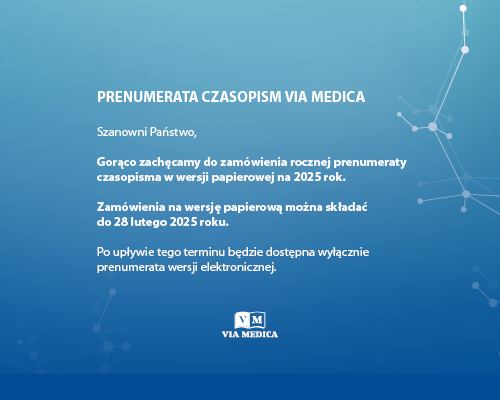Strategies to reduce allogeneic blood transfusion
Streszczenie
Blood is scarce and there will never be zero risk. Thus, multidisciplinary approaches to reduce or avoid allogeneic blood transfusion in medicine and surgery are discussed. In medical patients — depending on the situation — causes of anaemia should be investigated, nutritional deficiencies corrected and erythropoietic stimulating agents (ESA) used with or without intravenous (iv) iron. In surgical patients, it is important to check the blood count, evaluate the history of bleeding and drug therapy far in advance of surgery to allow time for diagnosis, anemia correction, haemostasis optimization or decision for a pre-deposit autologous donation. During intraoperative period bleeding can be minimized through the use of anaesthetic and surgical techniques, correcting hypothermia, acidosis, hypocalcaemia or hyperkaliemia. Also the use of pharmacological agents such as haemostatic sealants, antifibrinolytics, procoagulants and methods of autologous transfusion (acute normovolemic haemodilution, intracellular cell salvage) helps minimize the dependence on allogeneic blood transfusion. During acute bleeding, the use of thromboelastometry gives a full haemostasis overview and allows for more targeted use of platelet concentrates and fibrinogen. It has also been shown to reduce intraoperative transfusion requirements in high-risk surgical patients. In conclusion, the above-mentioned strategies, when included in protocols and guidelines, can substantially contribute to the reduction of the use of allogeneic blood.
Słowa kluczowe: allogeneicerythropoietic stimulating agentshaemostasisautologous bloodthromboelastometry





